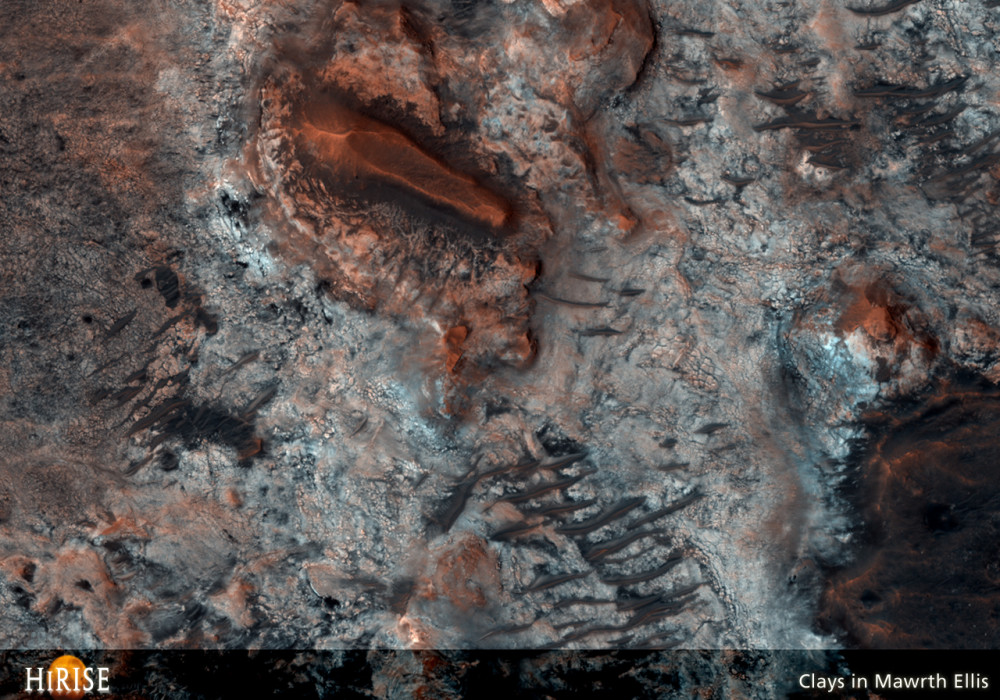Mawrth Vallis is one of the most colorful parts of Mars. However, it is not quite as colorful as seen in this observation, where this extra color comes from the fact that HiRISE can see into part of the infrared, enhancing its ability to detect color differences that are indicative of various minerals.
Properly identifying those minerals is where the CRISM instrument excels. They show that this area has a variety of different types of clay minerals: these are especially interesting because they had to form when water was interacting with rocks. The different types of clays point to different water chemistries and temperatures.
With HiRISE, we can better pinpoint how these different materials are distributed across the surface. Furthermore, by taking two images we can produce a stereo image and see the topography, allowing the different clay-bearing layers to be traced in three dimensions.Written by: Laszlo P. Keszthelyi (4 March 2008)
This is a stereo pair with PSP_005819_2050 .
More info and image formats at http://hirise.lpl.arizona.edu/PSP_006742_2050
Image: NASA/JPL/University of Arizona
